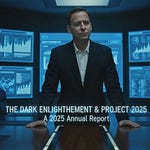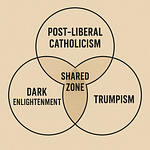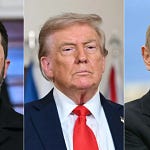Opening Spread
"You’re either going to make a deal or we’re out."
— Donald Trump to Volodymyr Zelenskyy, Oval Office, Feb 28, 2025
Since returning to the Oval Office, President Trump has made a series of moves that, whether by design or effect, align neatly with Moscow’s war aims in Ukraine. From conditioning U.S. aid on immediate cease-fire talks to planning a high-profile summit with Vladimir Putin, the White House insists this is “peace through strength.” But for Kyiv and its allies, the pattern is alarmingly familiar.
Main Article
A 2025 Timeline of Kremlin-Friendly Moves
Feb 28: Trump delivers an ultimatum to Zelenskyy, “make a deal or we’re out”, linking continued U.S. support to Ukraine’s acceptance of negotiations favorable to Russia.
Early March: Military aid shipments paused or reviewed, weakening Kyiv’s battlefield leverage.
Spring: Trump promotes a 30-day cease-fire proposal without verifiable Russian withdrawal, Putin signals interest, Ukraine objects.
August: Announcement of a Trump–Putin Alaska summit, with reports of potential “territorial swaps” on the agenda, an idea Ukraine flatly rejects.
Pull-Quote
"Whether intentional or not, these steps move the needle toward Moscow’s preferred endgame: a frozen conflict that cements its territorial gains."
Sidebar: Kremlin Objectives vs. Current U.S. Steps
Kremlin Strategic Objective Recent U.S. Action (2025) Cement control over occupied Crimea & Donbas. Entertain cease-fire concepts that leave Russia in possession of these areas. Reduce Ukraine’s capacity to resist militarily. Pause or threaten to cut U.S. military aid during active conflict. Split the Western coalition supporting Kyiv. Abrupt policy shifts causing confusion and misalignment among NATO allies. Normalize Russia’s gains via diplomatic “freezes.” Float “territorial swaps” and host bilateral summit with Putin without Ukraine’s endorsement.
Echoes of 2019
Trump’s 2025 Ukraine posture draws inevitable comparisons to the 2019 impeachment scandal, when he was accused of withholding congressionally approved aid to pressure Kyiv into announcing an investigation into the Bidens.
Key similarities:
Leverage of vital aid for political or diplomatic concessions.
Ukraine placed in a no-win position under active threat.
Key differences:
2019: Sought personal political advantage.
2025: Framed as pursuing a peace settlement, but one that mirrors Russian interests.
Pull-Quote
"A coerced peace is not peace, it’s capitulation dressed in diplomatic language."
Strategic Risks
Legitimizing Aggression: Rewarding territorial seizure sets a precedent for other revisionist powers.
Undermining Deterrence: Allies may question U.S. reliability in upholding security guarantees.
Weakening Coalition: Fractures in NATO strategy could be exploited by adversaries beyond Russia.
What to Watch
Summit Terms: Will Alaska talks include territorial concessions?
Aid Status: Does paused support resume or remain frozen?
Allied Response: Do NATO and EU partners double down on Kyiv or hedge their bets?
Closing Pull-Quote
"Intent can be debated. Effect cannot. These policies advance Moscow’s objectives—full stop."










